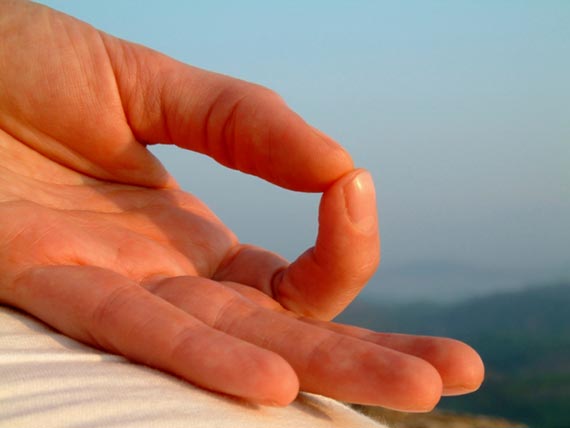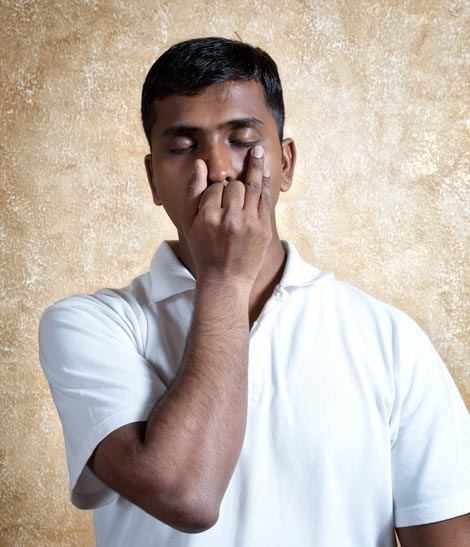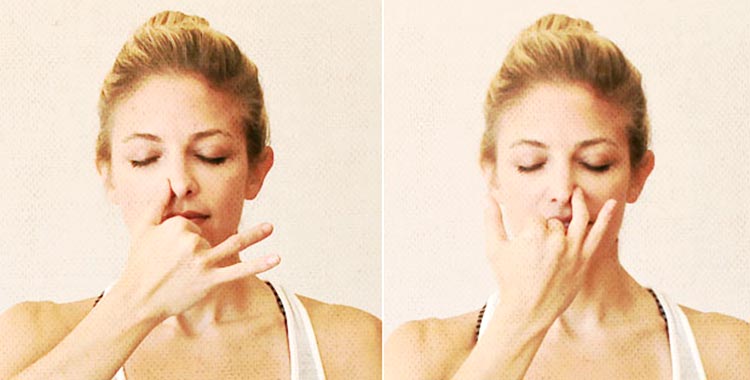Nadi Suddhi Pranayama
Breath, life and energy are intrinsically connected and yogis have a single word for all three of them – prana. Pranayama, where Breath is controlled, increases vitality and mental focus, and expands consciousness.
Breath acts as a bridge to our nervous system and by exploring pranayama practices we can observe how deeply it is connected to the mind. Just as our breathing alters depending on our mood, our psychological state can be altered by changes in our breath. Conscious breathing brings oxygen and energy to the cells and enhances all cellular processes. It’s a fantastic source of energy. It’s simple: when we breathe better we feel better.
– Yoga Lily, Hatha Yoga classes in Milton Keynes
Alternate Nostril Breathing
Nadi Suddhi Pranayama – this pranayama practice purifies the energy channels (nadis) and balances the flow of energy between the left and right sides of the body. It is especially beneficial when you need to re-centre yourself and is useful in leading you into meditation.
1. Sit in a position that gives you a straight back and is easy for you to maintain. Allow the back of the left hand to rest on top of the left knee, with the arm extended. Touch the left thumb to index finger in Chin Mudra.

Chin Mudra
2. Bend the right arm and, keeping the elbow at chest height, bring the tip of the right thumb to rest on the bridge of the nose, just above the right nostril.
3. Have the tip of the right ring finger just away from the left nostril. The little finger lies along the ring finger. Index and middle fingers are folded down to touch your palm. This is called Nose Mudra.

Nose Mudra finger positioning
4. Follow these steps from 1 to 3 in a cycle (one round):
- To start, press the right nostril lightly shut with the thumb and inhale through the left nostril.
- At the end of the inhalation close the left nostril with the ring finger and release the thumb. Exhale and inhale through the right nostril.
- At the end of the inhalation close the right nostril and release the left nostril. Exhale through the left nostril.
This is one round.

Nadi Suddhi Pranayama, Alternate Nostril Breathing
5. Continue for 7 to 12 rounds. If you like, use the thumb of your left hand to count the rounds against each segment of the fingers of the left hand. Bring the tip of the thumb to the tip of the index finger, then work down to the base of the finger. Moving up the middle finger and so on, until the 12th round takes you to the tip of the little finger.

6. As you become accustomed to this practice, you may like to do two more cycles of 12 rounds, resting the hand down and breathing naturally in between each cycle.
7. Once this technique is comfortable, gradually lengthen the breath. Silently counting the lengths of the inhalation and exhalation, making them even in length. Once even, increase the count by one beat and continue for a few rounds. If you still feel relaxed, increase it by another beat. As long as your breath remains smooth and even, add one more beat. If you notice any change or disturbance in the breathing, return to a lower count.

Once this technique is comfortable, gradually lengthen the breath
8. During the practice, don’t allow the elbow to drag upper body forward or take the head off centre. Have eyes closed, so it is easy to focus on the breath. When you have finished the practice, return the right hand to the right knee. Stay with your eyes closed with your normal, natural breathing for as long as you like, enjoying the sensation of inner spaciousness and 70 this practice can give you.

